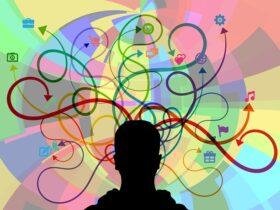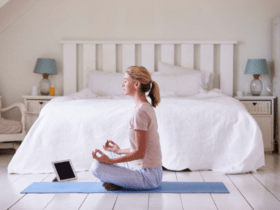In a world that values productivity and efficiency, daydreaming may seem like a waste of time. However, recent research has shown that it can positively affect our mental health and overall well-being.
Not only does it reduces stress and anxiety, but it also boosts creativity and problem-solving skills. Understanding the mechanism and process of daydreaming is crucial to unlocking its benefits.
This article will explore the power of daydreaming and how it can help us achieve our goals and lead a happier, more fulfilling life.
Key Takeaways
- Daydreaming is not a useless activity and has various benefits, including lessening stress and anxiety, providing mental relaxation and exploration, and helping to solve problems and gain a fresh perspective.
- It uses diverse brain parts, including executive problem-solving and creativity networks, and can lead to insights that may help individuals reach their goals.
- It is correlated with higher levels of creativity and productivity and is a tool in the mental health toolkit to evade stress and anxiety.
- Studies have found that interesting musings during mind-wandering are associated with a positive mood, mind-wandering facilitates creative incubation, and positive, constructive daydreaming is beneficial.
The Science Behind Daydreaming and Visualization
Daydreaming, or mind-wandering, is a natural cognitive process when our attention drifts away from the task. While it was once considered a sign of laziness or inattention, recent studies have shown that purposeful daydreaming can enhance cognitive functioning and promote well-being.
A study by researchers at the University of California, Santa Barbara, found that daydreaming during a demanding task can improve problem-solving abilities and creative thinking. The researchers suggest that daydreaming allows the brain to access information and ideas not immediately available during focused attention.
On the other hand, visualisation is a mental technique that involves creating mental images or scenarios to achieve a specific goal or outcome. Research has shown that visualization can improve performance in various domains, such as sports, academics, and emotional well-being.
For example, a study published in the Journal of Applied Psychology found that athletes who practised visualization techniques experienced significant improvements in their performance. Similarly, a study at the University of Chicago found that students who visualized themselves successfully completing a task performed better on exams than those who did not.
Benefits of Daydreaming
The benefits of daydreaming have been extensively studied and shown to foster creativity and problem-solving abilities. It can lessen stress and anxiety, provide mental relaxation and exploration, and utilize diverse brain parts. It is not just a waste of time but an effective tool that can enhance one’s cognitive abilities and overall well-being.
Creative inspiration often comes from the mind’s ability to wander, connecting seemingly unrelated ideas and concepts, leading to innovative solutions. Mindfulness techniques, such as meditation and visualization, can enhance the benefits of daydreaming by promoting a relaxed state of mind and improving focus. These techniques allow individuals to tap into their inner creativity, explore their thoughts and emotions, and develop a deeper understanding of their inner selves.

Incorporating daydreaming into one’s daily routine can provide a break from the stresses of daily life, allowing for mental rejuvenation and a fresh perspective. Through purposeful daydreaming, individuals can reach their goals, improve their problem-solving abilities, and foster creativity.
Mechanism and Process
Daydreaming involves the spontaneous and often unintentional shift of attention away from the external environment and towards internal thoughts and mental images. This process involves the default mode network, a network of brain regions active during periods of rest and self-reflection.
Daydreaming exercises can help individuals harness the power of mind-wandering techniques to boost creativity and reduce stress.
It can activate the brain’s creativity network, leading to novel ideas and insights. Additionally, it can help reduce stress and anxiety by providing a mental break from worry and rumination. Finally, daydreaming exercises can help individuals cultivate greater self-awareness and mindfulness, leading to greater emotional regulation and overall well-being.
Despite the many benefits, it is important to note that excessive daydreaming can be a symptom of certain mental health conditions, such as maladaptive daydreaming, and may require treatment.
Brain Health and Productivity
Daydreaming has been found to play a crucial role in maintaining good brain health and productivity. In a world where productivity is often measured by the work accomplished in a set time frame, taking mental breaks may seem counterintuitive. However, research has shown that incorporating daydreaming into daily routines can increase creativity, problem-solving abilities and reduced stress and anxiety.
The brain is like a muscle that needs exercise to function optimally.
Daydreaming provides a natural mental exercise that uses diverse brain parts, including executive problem-solving and creativity networks. Allowing the mind to wander and form new and unexpected connections can lead to insights that may help individuals reach their goals.

Moreover, incorporating daydreaming into daily routines can provide a much-needed mental break that revitalizes the mind and helps individuals forget and distance themselves from worrisome circumstances.
Goal Setting and Problem-Solving
Adding purposeful mental exercises and problem-solving techniques into daily routines has increased goal attainment and provided a fresh perspective.
One such mental exercise is creative visualization, which involves imagining oneself achieving a particular goal or desired outcome. This practice can help individuals identify and prioritize their goals and better understand the steps needed to achieve them.
Cognitive flexibility, or the ability to shift one’s thinking and adapt to changing situations, is crucial for effective problem-solving. Individuals can develop this skill by incorporating techniques such as brainstorming, mind-mapping, reframing and approaching challenges from new angles.
Visualizing success can increase motivation and drive. Problem-solving techniques can lead to a sense of accomplishment and satisfaction. Developing cognitive flexibility can reduce anxiety and increase adaptability. Using these techniques can lead to a more fulfilling and purposeful life.
Research has shown that purposeful daydreaming and visualization can improve cognitive functioning and well-being. By incorporating these techniques into daily routines, individuals can increase their productivity and creativity while reducing stress and anxiety. Furthermore, problem-solving techniques can help individuals overcome obstacles and achieve their goals, leading to a more fulfilling and purposeful life.
Tips for Incorporating Daydreaming and Visualization into Your Routine
Remember, like any other skill, effective daydreaming and visualization take practice. Be patient with yourself; gradually, you will see improvements in your ability to visualize, leading to personal growth and problem-solving skills.
- Set aside time: Making time for daydreaming and visualization is a crucial first step. It can be easy to overlook the importance of dedicating time for introspection and mental simulation in our busy routines. Start by designating a small time slot, such as 10-15 minutes daily, specifically for this purpose. Gradually, you can increase the time as per your comfort and need.
- Find a quiet space: The environment plays a significant role in the effectiveness of daydreaming and visualization. Try to find a place where you won’t be disturbed or distracted. This could be a comfortable spot in your home, a quiet park, or even your personal workspace. The key is to be in a space that helps you relax and encourages free thought flow.
- Be intentional: Daydreaming and visualization can be more effective when guided by a specific goal or topic. Instead of letting your mind wander, focus on a particular concept, situation, or goal. This could be a project you’re working on, a skill you want to improve, or even a situation you wish to handle better. Intentional daydreaming can promote problem-solving, enhance creativity, and aid personal development.
- Practice mindfulness: While daydreaming and visualization involve exploring future possibilities or reimagining past experiences, it’s essential to stay mindful. Be conscious of the thoughts and emotions that arise during this process. Observe them without judgement, and try to understand their origins. Mindfulness can enhance self-awareness, making daydreaming and visualization exercises more insightful and constructive.
- Combine with other relaxation techniques: Daydreaming and visualization can be more beneficial when combined with other relaxation techniques. Deep breathing exercises can help you calm your mind, making it easier to visualize. Progressive muscle relaxation can help reduce physical tension, facilitating a deeper state of relaxation.
Combining these techniques can enhance the overall experience and make your daydreaming and visualization routine more effective.
Conclusion
Daydreaming is a natural and necessary process that can benefit our mental health and well-being. It can boost creativity, reduce stress and anxiety, and improve problem-solving skills. By recognizing its value and incorporating it into our daily routine, we can lead a more fulfilling life and achieve our goals.
















Leave a Reply